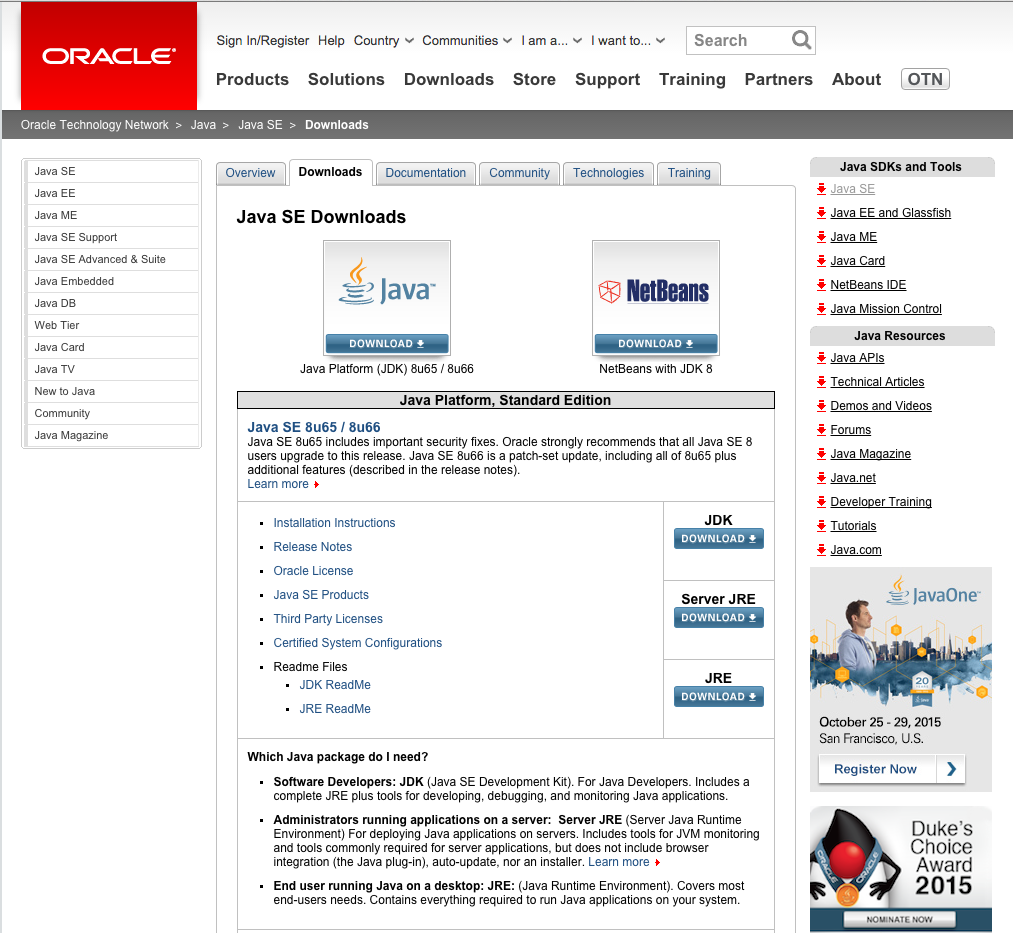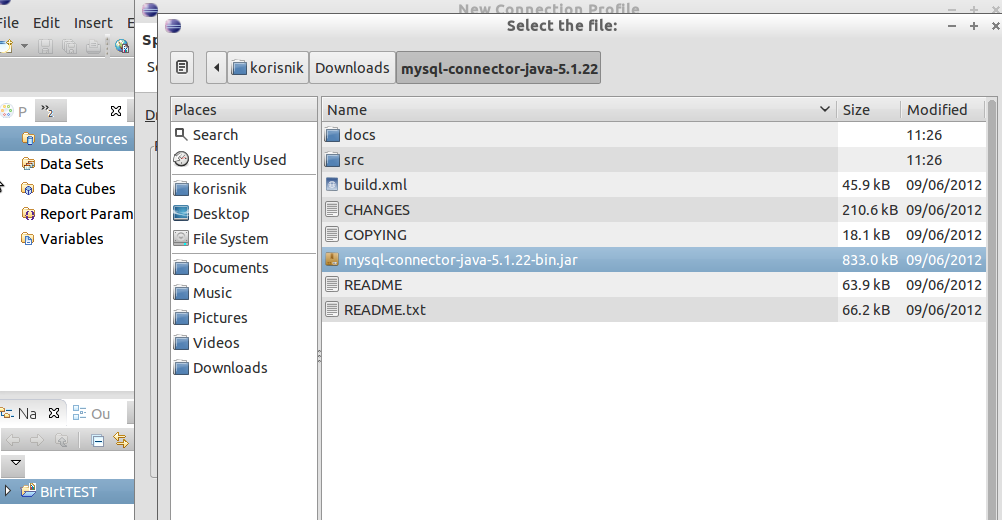- Installing Eclipse on Mac OS X Assalamualaikum dan salam sejahtera, Hari ini juga saya ingin kongsikan mengenai Java Editor yang popular dikalangan 'programmer'.
- Eclipse is available as both 32-bit and 64-bit binaries. Deciding which one to download can be complex. Mac OS X 10.7 (Lion), Mac OS 10.8 (Mountain Lion), Mac OS 10.9 (Mavericks) Use the 64-bit Eclipse (Lion does not include a 32-bit JVM) Mac OS X 10.6 (Snow Leopard).
Step 1: Installing and configuring Eclipse Step 1a: Download. NOTE: if you used Eclipse before, you may have an older version installed. If so, we strongly recommend you uninstall it and install the latest version for maximum compatibility.
Install Python before installing Eclipse.
You may want to print these instructions before proceeding, so that you can refer to them while downloading and installing Eclipse. Or, just keep this document in your browser. You should read each step completely before performing the action that it describes. This document shows downloading and installing Eclipse (Luna). You should download and install the latest version of Eclipse. The current latest (as of Fall 2018) is Eclipse 2018-09.
Eclipse: Luna
The Eclipse download requires about 200 MB of disk space; keep it on your machine, in case you need to re-install Eclipse. When installed, Eclipse requires an additional 200 MB of disk space.
Downloading
- Click Eclipse
The following page will appear in your browser. In this handout we will download Eclipse Standard 4.4 for Mac OS. The version you should download is Eclipse IDE for Eclipse Committers.
It is critical that Java, Python, and Eclipse are either all 32 Bit or are all 64 Bit (and only if your Machine/OS supports 64 Bit): I think it easiest on Macs to use 64 Bit for everything.
- Click the 64-bit after Mac Cocoa for your machine, to the right of Eclipse Standard 4.4 (right under Eclipse Luna R Packages).
You will see the following page (don't worry about the name of the institution to the right of the big downward pointing arrow).
- Click the big downward pointing arrow underneath the Download eclipse-standard-luna-R-macosx-cocoa-x86_64.tar.gz from: The site named here, in purple to the right of the arrow: [United States] ibiblio (http) is the random one chosen by the download page this time; yours may differ.
If you see the following pop-up window
ensure the Save File radio button is depressed and click OK.
This file should start downloading in your standard download folder. This file is about 200 Mb so it might take a while to download fully if you are on a slow internet connection (it took me a few minutes over a cable modem). Don't worry about the exact time as long as the download continues to make steady progress.
After the download has finished, terminate the window browsing the Eclipse download.
- Move this file to a more permanent location, so that you can install Eclipse (and reinstall it later, if necessary).
- Start the Installing instructions directly below.
Installing (for Python)
Python and Java should be installed before installing Eclipse
- Unzip eclipse-standard-luna-R-macosx-cocoa-x86_64.tar.gz by double-clicking it.
Unzipping this file creates a folder named eclipse; unzipping 200 MB can take a few minutes. You can leave this folder here or move it elsewhere on your hard disk.
- Create an alias on the desktop to to the eclipse file in this eclipse folder:
On the Mac, you can- Control-click the file eclipse.exe
- Select the Make Alias option.
- Move it to the desktop.
Now you are ready to perform a one-time only setup of Eclipse on your machine.
- Double-click the alias to Eclipse that you just created above.
If the following pop-up window appears
click Open.
The following splash screen will appear
and then a Workspace Launcher pop-up window will appear.
In the Workspace text box, your name should appear between /Users and /Documents, instead of ellenolshansky (I did this on my wife's Mac).
Leave unchecked the Use this as the default and do not ask again box. Although you will use this same workspace for the entire quarter (checking projects in and out of it), it is best to see this Workspace Launcher pop-up window each time you start Eclipse, to remind you where your workspace is located.
In fact, it is a good idea to create on your desktop an alias to your workspace folder; but you must click OK (see below) before Eclipse creates this folder and you can alias it.
- Click OK.
Progress bars will appear as Eclipse loads.
Eventually the Eclipse workbench will appear with a Welcome tab covering it.
- Terminate (click X on) the Welcome tab.
You will not see the Welcome tab when you start Eclipse again, after this first time.
- Click Help (on the far right of the top toolbar) and then click Install New Software... in its pull-down menu, as shown below.
The Install pop-up window will appear.
- Enter the text (or cut/paste from this document) http://pydev.org/updates into the Work with text box and press Enter (if that doesn't work, try http://www.pydev.org/updates).
In a few seconds the information under Name should change from
There is no site selected to Pending toSelect only the top PyDev checkbox; do NOT select the PyDev Mylyn Integration (optional) box.
Check before proceeding that the Install pop-up window appears as - Click Next >
A new Install pop-up window will appear.
- Click Next >
A new Install pop-up window will appear.
Selecet the I accept the terms of the license agreement radio button, so the window appears as
- Click Finish
An Installing Software pop-up window will appear. During installation, it will show the various operations it is performing and a progress bar for each one. Because the installer is fetching various files online, this process might take a few minutes.
The installation will pause, and a Selection Needed pop-up window appears.
- Check the box labeled Brainwy Software; Pydev; Brainwy.
Check before proceeding that the Install pop-up window appears as
- Click OK
The installation will finish (showing the final progress bars).
A Software Updates pop-up window will appear.
- Click Yes
Eclipse will terminate and restart. As you did in step 3, click OK to the Workspace Launcher pop-up window.
- Click Eclipse (to the right of Apple logo on the far left of the top tool bar), and then click Preferences in its pull-down menu, as shown below.
- Drill down to select the interpreter:
- Disclose PyDev by clicking the triangle in front of PyDev or double-clicking PyDev (after the triangle).
- Disclose Interpreters by clicking the triangle in front of Interpreters or double-clicking Interpreters (after the triangle).
- Select Python - Interpreter.
- Click New... at the top-right of the top window
A Select Interpreter pop-up window appears.
Type python34 in the Interpreter Name text box.
Type (or cut/paste) //usr/local/bin/python3 in the Interpreter Executable text box (or browse to this file).
The Select Interpreter pop-up window should appear as - Click OK.
A Selection needed pop-up window will appear.
Ensure that a check appears in all four checkboxes.
- Click OK.
The Preferences pop-up window will be changed to
- Click OK.
A Progress Information pop-up window will appear.
During installation, it will show the various operations it is performing and a progress bar for each one. Eventually the installation will terminate.
- Click Window (to the left of Help on the far right of the top tool bar), hover over Open Perspective in the pull-down menu and then click Other... in the next pull-down menu.
The Open Perspective pop-up window will appear.
- Double-click PyDev (third from the bottom)
The label on Eclipse will change from Java - Eclipse to PyDev - Eclipse, and the Package Explorer in the upper-left tab will change to PyDev Package Explorer, and a PyDev icon will appear to the right of the Java icon.
- Right-click the Java icon to the left of the PyDev icon and select close
The Eclipse workbench will now have only the PyDev icon here and will look like
- Download the courselib.zip file.
In the pop-window that appears
ensure the Save File radio button is depressed and click OK.
- Locate the workspace folder created in step 3 (see /Users/yourname/Documents/workspace) and copy the courselib.zip file into this workspace and unzip it there, producing the courselib folder; it should should contain a bunch of Python module files (ending in .py). From time to time you will be asked to put other course-specific Python module files into this courselib folder; these modules will be usable in all Python projects in Eclipse.
- Inform Eclipse to use the courselib folder in all Python projects.
- Select Eclipse | Preferences.
- Disclose PyDev by clicking the triangle in front of PyDev or double-clicking PyDev (after the triangle).
- Disclose Interpreters by clicking the triangle in front of Interpreters or double-clicking Interpreters (after the triangle).
- Select Python - Interpreter.
- Click the Libraries tab (leftmost, above the bottom pane)
- Click the New Folder button (topmost, right of the bottom pane)
- Browse to the courselib folder (added above) in the Browse for Folder pop-up window (/Users/yourname/documents/workspace/courselib).
- Click the courselib folder selected, and then click OK
- Click Apply (you will see some progress bars)
The < />< />< b=' /> pop-up window should now appear asNotice a fifth entry (ending in courselib appears at the bottom of the bottom pane named System PYTHONPATH
< />< /> - Cick OK
- Terminate (click X on) the Eclipse window.
 Eclipse is now installed for Python.
Eclipse is now installed for Python. - Installation of Eclipse (Mac ver.) ★
Environment
Mac
mac mini(Mid2010)
OS X 10.11.6 El Capitan
At last of Java development environment setting, you need to install Eclipse which is a IDE (Integrated Development Environment) software.
If you skip installation of IDE like Eclipse, you have to use terminal to compile or execute a Java program by executing compile command or execute command.
Without Ecliplse, it is very inefficient to develop a system. So, usually, IDE is necessary for system development.
Famous IDE is as below;
Eclipse, JBuilder, NetBeans, IntelliJ
Eclipse and IntelliJ are very popular and they can be downloaded without any charge.
Installation of Eclipse
You can download eclipse from the following site.
Eclipse download(http://eclipse.org/downloads/)
Install Eclipse On Mac
Click DOWNLOAD 64 BIT’ on the screen.
Click ‘DOWNLOAD’ button on the showing download screen.
Download will take a while.
*If Downloading takes a lot of time, try to reload your browser.
Download speed might increase.
Install Eclipse
Downloading is done.
By double-clicking the downloaded file, install Eclipse.
After the following screen shows, install ‘Eclipse IDE for Java EE Developers’.
When the following screen appears, choose an installation folder.
Eclipse For Mac Download
By clicking ‘INSTALL’ button, wait for a while until installation will be done.

After installation is done, the following screen will open. On that screen, click the red rectangle to run Eclipse.
To run a eclipse, it will take for a while. The following screen will show until eclipse complete to run.

After running, ‘Workspace launcher’ window will show and you need to choose the workspage folder.
Install Eclipse For Mac
Workspace is a folder to store all application data like source code files and setting files. You can choose a default workspace without any change on the window.
Eclipse Download Mac Os X
After you choose the workspace folder, click ‘Launch’ button.
Eclipse will run. You can see the following eclipse development screen.
Eclipse Ide For Mac
Now, you complete all installation for Java development.
